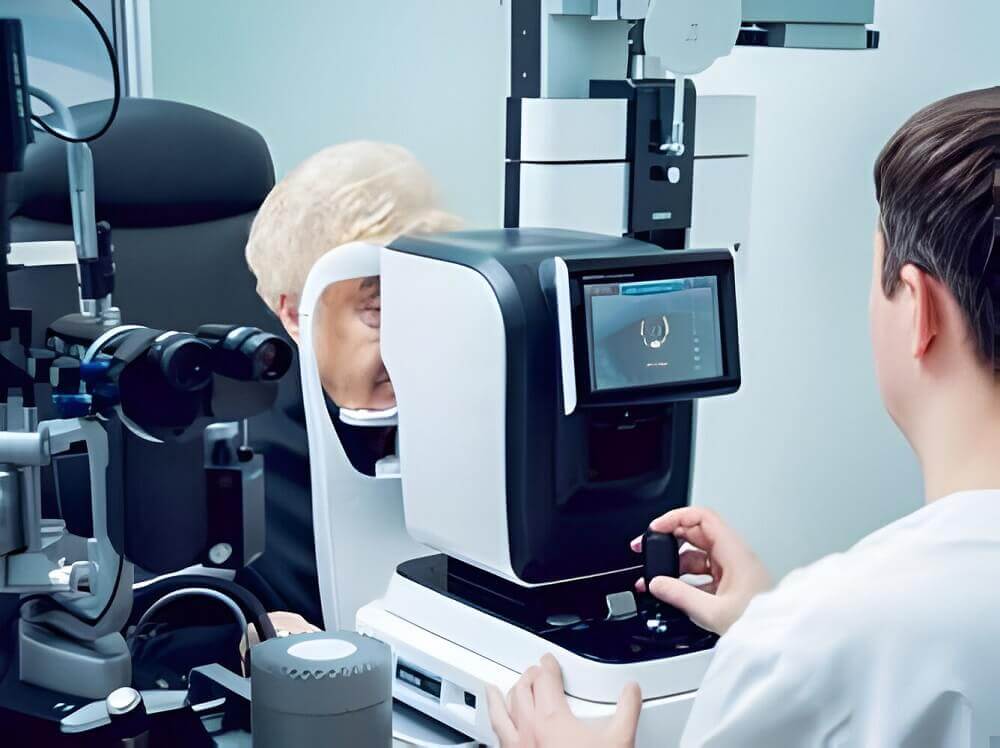In the world of eye care, precision and efficiency are paramount. Auto refractometers have emerged as pivotal tools in modern optometry, transforming the landscape of eye exams.
This technology not only streamlines the diagnostic process but also elevates the accuracy of prescriptions, leading to improved patient outcomes and optimized clinic operations.
In this detailed exploration, we’ll uncover how auto refractometers enhance both accuracy and efficiency in eye exams, fundamentally changing the approach to vision care.
Introduction to Auto Refractometers
Auto refractometers are advanced optical devices used by eye care professionals to determine the refractive error of the eyes quickly and accurately. By automating the process of measuring how light refracts through the eye.
These devices provide a precise calculation of the lens power needed to correct vision problems like nearsightedness, farsightedness, and astigmatism. The technology behind auto refractometers includes a combination of sensors, cameras, and sophisticated software algorithms that analyze the eye’s response to light.
The Role of Auto Refractometers in Enhancing Accuracy
The primary advantage of auto refractometers is their ability to provide highly accurate measurements, which is crucial for creating effective and comfortable vision corrections. Here’s how they contribute to accuracy:
Reduced Human Error: Traditional methods of measuring refractive errors are susceptible to human error, both from the patient and the practitioner. Auto refractometers minimize this risk by using automated processes to capture and analyze data.
Consistency of Measurements: Auto refractometers deliver consistent results, which is essential for tracking changes in vision over time and ensuring that each prescription is accurate.
Detection of Subtle Changes: These devices are sensitive enough to detect minor refractive errors that manual tests might miss, ensuring that even slight vision issues can be addressed promptly.
Boosting Efficiency in Eye Care Clinics
Efficiency in medical settings is critical not only for the clinic’s throughput but also for improving the patient experience. Auto refractometers significantly enhance operational efficiency by:
Speeding Up the Exam Process: Auto refractometers can complete the basic measurements in a few seconds, which significantly speeds up the overall exam process. This rapid assessment allows optometrists to see more patients within the same timeframe, effectively increasing the clinic’s capacity.
Streamlining the Diagnostic Workflow: With auto refractometers, the preliminary data needed for further eye examinations is quickly available, allowing eye care professionals to focus more on analysis and patient consultation rather than data collection.
Reducing Patient Fatigue: The quick operation of auto refractometers makes the eye exam less taxing for patients, particularly for those who are young, elderly, or have mobility issues. A shorter exam duration leads to a better overall patient experience.
Integration with Other Diagnostic Tools
Auto refractometers do not operate in isolation. They are often part of a larger diagnostic toolkit that includes other advanced technologies like keratometers and optical coherence tomography (OCT). The integration of these tools provides a comprehensive overview of the patient’s eye health, enabling a holistic approach to diagnosis and treatment. For instance:
Combining Measurements: Data from auto refractometers can be integrated with measurements from other devices to enhance the accuracy of the diagnosis, such as adjusting intraocular lens calculations for cataract surgery.
Streamlined Data Management: Modern auto refractometers can connect to electronic health records (EHRs), allowing seamless data transfer and management, which further enhances clinical efficiency and reduces paperwork.
Future Directions and Technological Advancements
The future of auto refractometers looks promising with continuous advancements in technology aiming to further enhance both accuracy and efficiency. Potential developments include:
Artificial Intelligence (AI) Integration: Implementing AI can lead to more personalized and precise measurements. AI algorithms can learn from a vast array of data to predict refractive errors more accurately and suggest the most effective corrective measures.
Better Patient Engagement: Future auto refractometers might include features that educate patients about their eye health during the exam itself, using interactive displays to explain conditions and corrections.
Conclusion
Auto refractometers represent a significant technological advancement in the field of optometry, providing unprecedented levels of accuracy and efficiency in eye exams. By automating the initial stages of the diagnostic process, these devices not only save time but also enhance the precision of the assessments, leading to better patient care and optimized clinic operations.
As technology continues to evolve, the role of auto refractometers is set to expand, further revolutionizing the approach to eye health and vision care.








